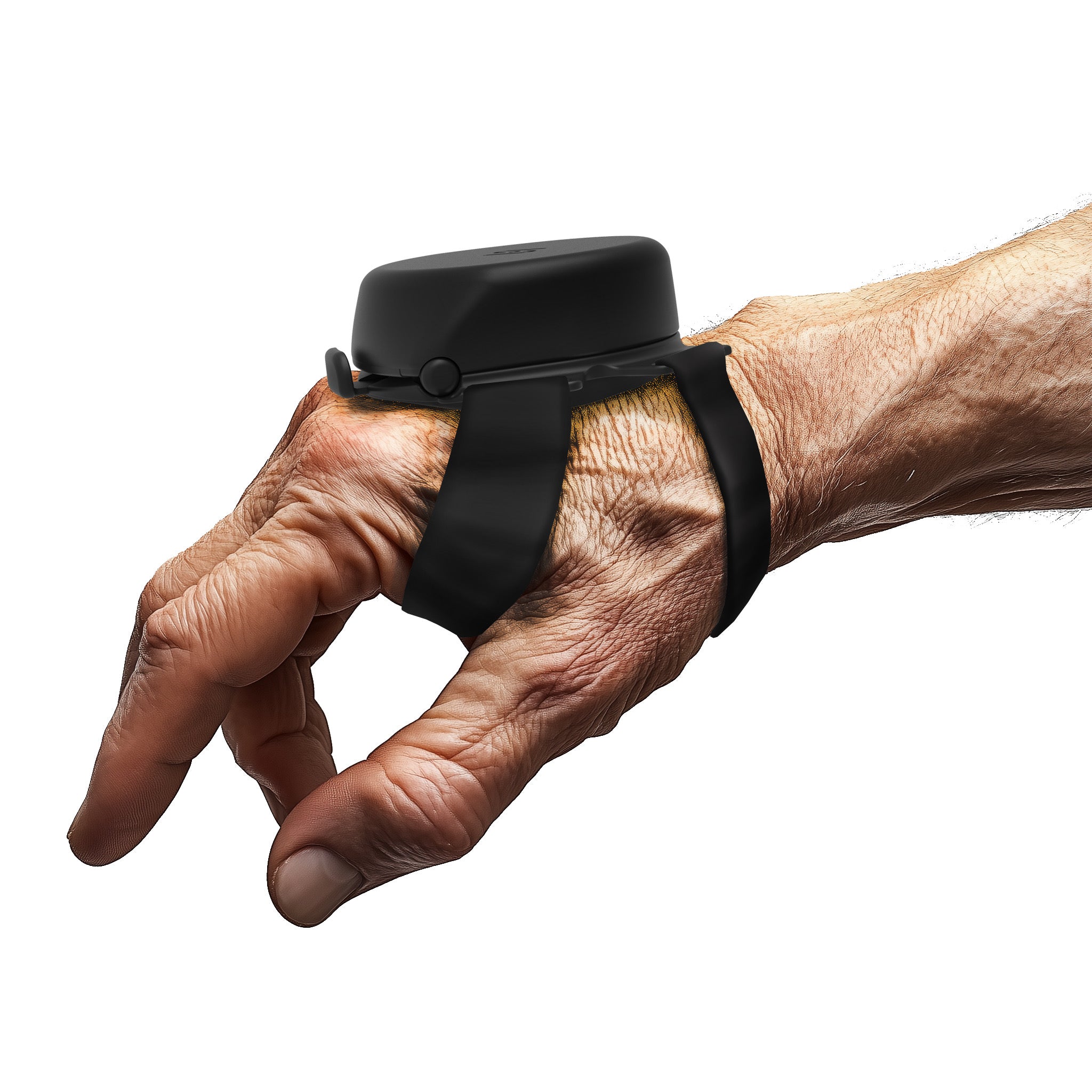Finger twitching can be a benign, fleeting condition or a symptom of a more significant health issue. It's not uncommon to experience a sudden twitch in the index finger or other parts of the hand. While often harmless, understanding the causes and knowing when to seek help is crucial for managing this condition effectively.
What Causes Finger Twitching?
Finger twitching, including the index finger, can result from various factors ranging from lifestyle choices to neurological conditions. Common causes include overuse, stress, and caffeine consumption. However, it can also be a sign of neurological disorders like essential tremor, Parkinson's disease, or even carpal tunnel syndrome.
How Can Finger Twitching Be Managed?
For those experiencing benign twitches, simple lifestyle modifications such as stress reduction techniques, cutting back on caffeine, and ensuring adequate rest can alleviate symptoms. However, when finger twitching is persistent and affects daily activities, it's essential to explore various management strategies, including the use of assistive devices for hand tremors.
The Role of Assistive Devices
Assistive technology has come a long way in providing relief to those suffering from hand tremors. Essential tremor devices, specifically designed to counteract the involuntary movements, can be life-changing. These devices range from specialized utensils to sophisticated wearables.
Anti Tremor Devices: A Closer Look
Anti tremor devices are innovative solutions that stabilize the hand or finger to reduce the impact of tremors. They often use sensors and motors to provide counter-movements to involuntary shakes, allowing for smoother and more controlled motion.
Devices for Hand Tremors: Options Available
The market offers a variety of devices for hand tremors, each designed to address different needs and levels of tremor severity. Some are wearable, while others are external tools that provide support during specific tasks like writing or eating.
When to Seek Help
If you notice index finger twitching frequently or if it's accompanied by other symptoms, it's important to consult a healthcare professional. They can provide a proper diagnosis and recommend treatment options, which may include the use of essential tremor devices or other therapeutic approaches.
Understanding the Impact of Finger Twitching on Daily Life
Finger twitching can have a more profound impact on daily life than many realize. For individuals who rely on steady hands for work—like musicians, surgeons, or artists—twitching can hinder their professional performance. Even non-professionals may find difficulty in performing routine tasks such as typing, cooking, or applying makeup. Recognizing the extent to which finger twitching affects your daily routine is the first step in seeking appropriate interventions.
Technological Advancements in Managing Hand Tremors
The field of assistive technology has seen significant advancements in recent years. Innovations include smart gloves that use gyroscopes and accelerometers to stabilize tremors, and wristbands that provide gentle electrical stimulation to interrupt misfiring neurons causing the tremor. These advancements not only offer more effective management of symptoms but also improve the user's independence and confidence in performing daily tasks.
Lifestyle Adjustments to Complement Assistive Devices
While assistive devices play a crucial role in managing hand tremors, lifestyle adjustments can also make a significant difference. Incorporating hand-strengthening exercises, practicing stress-reduction techniques like meditation or yoga, and maintaining a healthy diet can all contribute to tremor reduction. Additionally, avoiding stimulants such as caffeine and nicotine that can exacerbate tremors is also beneficial. These lifestyle changes, in conjunction with the use of devices for hand tremors, can provide a holistic approach to managing the condition.
Navigating the Complex World of Essential Tremor Diagnosis and Treatment
Essential tremor is more than just a temporary shake; it's a chronic condition that can significantly disrupt daily life. Understanding the nuances of essential tremor is crucial, from recognizing the early signs to exploring the spectrum of available treatments. Medications such as beta-blockers and anticonvulsants are often first-line treatments, but for some, more advanced interventions like deep brain stimulation may be considered. This section will guide you through the intricacies of essential tremor, helping you understand when to seek a diagnosis and the treatment options that could lead to a better quality of life.
Sharing the Journey: Real-Life Experiences with Finger Twitching and Tremors
The power of shared experiences cannot be understated. In this section, individuals who have lived with finger twitching and tremors share their stories. You'll read about the daily challenges they face, the strategies that have helped them regain control, and the emotional journey of living with a tremor. These personal accounts provide not only a sense of community but also practical advice and hope for those who may be feeling isolated in their experiences.
Step-by-Step: Using Assistive Devices to Manage Hand Tremors
For many dealing with hand tremors, assistive devices are a game-changer. This section includes detailed guides and video demonstrations on how to use various assistive devices for hand tremors, from simple weighted utensils to sophisticated electronic stabilizers. Whether you're learning to navigate a new diagnosis or looking to improve your current management strategies, these step-by-step tutorials will help you make the most of the technology available to you.
Choosing the Right Tool: A Comparative Look at Anti-Tremor Devices
With a myriad of anti-tremor devices on the market, selecting the right one can be daunting. This comprehensive comparison guide looks at the latest devices for hand tremors, weighing their features, benefits, and limitations. From user reviews to expert recommendations, this section will help you navigate the options and select a device that aligns with your lifestyle and tremor management Within the domain of neurological disorders, the investigation into natural treatments and advanced devices, such as tremor gloves, extends its scope beyond essential tremors to encompass conditions like Parkinson's disease. Both conditions share similarities in the challenges they present to individuals' daily lives, and the holistic approach outlined in this guide is equally applicable to both. As we contemplate the potential of natural remedies and adaptive devices, we observe parallel advancements in Parkinson's care, including the development of specialized gloves and adjustments to lifestyle. By promoting cross-disciplinary research and embracing a comprehensive perspective, individuals and healthcare professionals alike can navigate a range of solutions that cater to the nuanced needs of various neurological conditions.
needs.
Finger Twitches & Tremors: FAQs
1. What are the main causes of index finger twitching?
Index finger twitching can be caused by a variety of factors, including muscle fatigue, excessive caffeine intake, stress, or more serious conditions like essential tremor or neurological disorders. If the twitching is persistent, it's advisable to consult a healthcare professional for an accurate diagnosis.
2. How do essential tremor devices help with finger twitching?
Essential tremor devices are designed to stabilize the hands and reduce involuntary movements. They often use advanced technologies like weighted mechanisms or sensory feedback to provide control and improve dexterity, which can be particularly helpful for tasks that require precision.
3. Are there any anti tremor devices suitable for everyday use?
Yes, there are anti tremor devices available that are discreet and comfortable enough for everyday wear. These devices can range from specialized gloves to wristbands, designed to counteract tremors and assist with daily activities like writing, eating, and using a computer.
4. What types of devices for hand tremors are available on the market?
The market offers a wide range of devices for hand tremors, including weighted gloves, stabilizing utensils, and electronic wristbands. Each device serves a different purpose, from aiding with fine motor skills to providing overall stability for the hands.
5. When should someone consider using assistive devices for hand tremors?
Assistive devices for hand tremors should be considered when tremors start to interfere with daily activities and quality of life. They are also recommended when a person notices increased difficulty in performing tasks that require fine motor skills, such as writing, dressing, or eating.
Conclusion
While finger twitching can be a minor annoyance, it's important not to dismiss it when it's persistent. With the advancement in medical technology, there are numerous assistive devices for hand tremors that can help manage the condition. By understanding the causes and exploring available treatments, including anti tremor devices, you can take control of your symptoms and improve your quality of life.
Remember, you're not alone in this. With the right information and tools, finger twitching can be managed effectively. If you're experiencing ongoing hand tremors, reach out to a medical professional to discuss your options and find the best solution for you.



